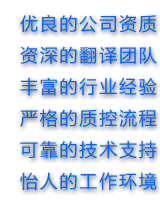余丰慧·《释放流动性进入实体经济是关键》英译
近日,央行负责人表示,要通过适时加大逆回购操作力度、下调存款准备金率等多种方式,稳步增加流动性供应。
目前,货币政策工具面临着多重考验和挑战。一季度经济数据显示,投资增速、消费增速、进出口增速都在下降;但同时,3月份物价又反弹至3.6%,利率再度转负。这两种相互矛盾的数据诉求,使得货币政策处于两难选择之境地。
中国人民银行日前发布的数据显示,一季度中国新增人民币贷款2.46万亿元,比去年同期的2.24万亿元多增0.22万亿元;社会融资规模为3.88万亿元,比去年同期的4.19万亿元略微下降0.31万亿元。这说明一季度贷款投放并不少,社会总体流动性并不缺乏。
在市场流动性总体并不缺乏,而企业经营困难增大的情况下,通过释放流动性硬性输血的做法,需要认真拿捏。如果实体经济难以消化吸收,极有可能使得市场流动性过剩并流入到房市、股市以及其他投机市场,引发经济金融泡沫风险。因此,如何引导社会流动性进入实体经济领域比盲目释放流动性更加重要。
如果确实需要下调存款准备金率以及加大逆回购操作、央票到期释放流动性的话,一定要有的放矢。应确保释放出的流动性进入国家在建续建重点项目、保障性住房项目,解决居民家庭首次购买自住普通商品住房的贷款需求、“三农”资金需求、中小微型企业资金需求,保障战略性新兴产业、农田水利建设等信贷资金需求。贷款一定还要跟着项目走,以项目资金需求量来确定贷款投放总量。
总之,一定要确保社会总体流动性以及央行下调存款准备金率等货币政策工具操作释放的流动性进入实体经济领域。
(选自《京华时报》2012年4月20日)
The Importance of Injecting Liquidity into the Real Economy
Yu Fenghui
An official from the People’s Bank of China has recently indicated that the central bank would increase supply of liquidity at a steady and appropriate pace through measures including expansion of reverse repo operations and reduction in the reserve requirement ratio.
There are currently multiple tests and challenges with regard to the application of monetary policy tools. Official data released for the first quarter show a slower growth in investment, consumption and trade. Meanwhile, in March, China’s CPI rebounded to 3.6% and its interest rate once again turned negative. Due to the two contradictory sets of data, China’s monetary policy has run into a dilemma.
According to data released by the People’s Bank of China earlier this month, new loans in the first quarter amounted to 2.46 trillion yuan, up 0.22 trillion yuan compared with 2.24 trillion yuan during the same period a year ago. China’s first-quarter social financing stood at 3.88 trillion yuan, a slight decrease of 0.31 trillion yuan from 4.19 trillion yuan over the same period last year. All this suggests that there was no shortage of credit supply in the first quarter, nor a general shortage of liquidity in the society.
Given that there is no general shortage of liquidity in the market, and the enterprises are facing an uphill struggle in their operations, a forced injection of liquidity into the economy needs to be carefully weighted. If the liquidity to be released cannot be absorbed by the real economy, there is likely to be excess liquidity being channeled into the housing market, the stock market and other speculative markets, triggering a wave of economic and financial bubbles. Therefore, it is more important to infuse social liquidity into the real economy rather than to release liquidity with no clear objectives.
If there is a real need to lower reserve requirements, increase reverse repo operations, and release liquidity at the time of maturity of the central bank bills, we must make sure to do so with a well-defined objective. On the other hand, liquidity must be pumped directly into China’s key projects under construction or expansion, affordable housing projects, and bank funding programs, such as funding for residents eligible for purchases of their first homes under commercial conditions, the “three rural issues” (concerning the plight of the peasants, agriculture and rural communities), micro, small and medium-sized enterprises, China’s emerging industries of strategic importance, and the construction of farmland irrigation systems. We must also make sure that bank loans are applied in proportion to the needs of individual projects and programs that determine the aggregate amount of bank lending required.
All in all, we must ensure that both general liquidity available in the society, and liquidity to be released through the use of varying monetary policy tools, such as reduction of banks’ required reserves, will find their way into the real economy.
(陈小全 译)
- 相关文章
随机文章













